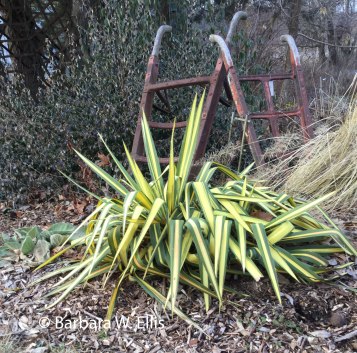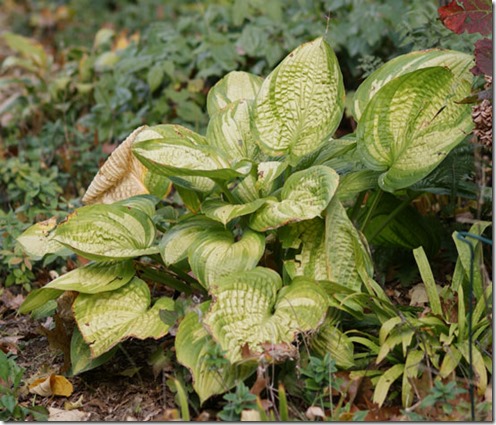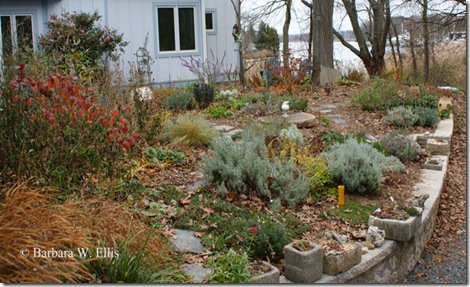Each spring, I look forward to the first flowers, and my winter aconites have come into bloom right on schedule. I won’t be surprised if there are insects visiting the blossoms next week during the warm days the weather forecasters are promising us. Warm weather also provides a great opportunity for pruning, so I am working on plans as I type this post.
Flowers are not the only way to brighten up the landscape this time of year, though. As I turned back into the driveway at the end of a walk with my dogs today, my eye went right to the clumps of variegated yuccas along the driveway. They not only add splashes of bold yellow to the otherwise dreary winter landscape, they also produce spikes of white flowers in summer. Couple that with the fact that they are incredibly low maintenance plants–all they ask is full sun and average to dry, well-drained soil–and I can’t fathom why they aren’t more popular. (I know that all-green and blue-green types are pretty common!)
So, I am posting pictures of two of my clumps in the hopes that a few Eastern Shore Gardeners will add a plant or two to their own landscapes. Just be advised that you do have to be a bit patient: It takes a couple of years for pot-grown plants to really get established and produce a good-size clump.













